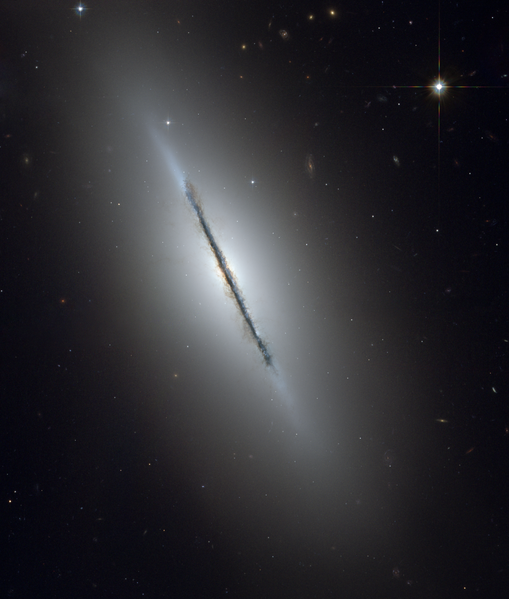Ficheiro:Ngc5866 hst big.png

Tamaño desta vista previa: 509 × 599 píxeles. Outras resolucións: 204 × 240 píxeles | 408 × 480 píxeles | 652 × 768 píxeles | 870 × 1.024 píxeles | 1.739 × 2.048 píxeles | 3.190 × 3.756 píxeles.
Ficheiro orixinal (3.190 × 3.756 píxeles; tamaño do ficheiro: 25,78 MB; tipo MIME: image/png)
Historial do ficheiro
Prema nunha data/hora para ver o ficheiro tal e como estaba nese momento.
| Data/Hora | Miniatura | Dimensións | Usuario | Comentario | |
|---|---|---|---|---|---|
| actual | 16 de febreiro de 2009 ás 18:38 |  | 3.190 × 3.756 (25,78 MB) | Spencer | {{Information |Description={{en|1=From original NASA press release: :This is a unique view of the disk galaxy en:NGC 5866 tilted nearly edge-on to our line-of-sight. Hubble's sharp vision reveals a crisp dust lane dividing |
Uso do ficheiro
As seguintes 2 páxinas usan este ficheiro:
Uso global do ficheiro
Os seguintes wikis empregan esta imaxe:
- Uso en ab.wikipedia.org
- Uso en ace.wikipedia.org
- Uso en af.wikipedia.org
- Uso en af.wikibooks.org
- Uso en af.wikiquote.org
- Uso en af.wiktionary.org
- Uso en ak.wikipedia.org
- Uso en als.wikipedia.org
- Uso en am.wikipedia.org
- Uso en am.wiktionary.org
- Uso en ang.wikipedia.org
- Uso en ang.wiktionary.org
- Uso en an.wikipedia.org
- Uso en an.wiktionary.org
- Uso en arc.wikipedia.org
- Uso en ar.wikipedia.org
- Uso en ar.wikibooks.org
- Uso en ar.wikinews.org
- Uso en ar.wikiquote.org
- Uso en ar.wikisource.org
- Uso en ar.wikiversity.org
- Uso en ar.wiktionary.org
- Uso en arz.wikipedia.org
- Uso en ast.wikipedia.org
- Uso en ast.wiktionary.org
- Uso en as.wikipedia.org
- Uso en av.wikipedia.org
- Uso en ay.wikipedia.org
- Uso en ay.wiktionary.org
- Uso en az.wikipedia.org
- Uso en az.wikibooks.org
- Uso en az.wikiquote.org
- Uso en az.wikisource.org
- Uso en az.wiktionary.org
- Uso en bat-smg.wikipedia.org
- Uso en ba.wikipedia.org
- Uso en bcl.wikipedia.org
- Uso en be-tarask.wikipedia.org
- Uso en beta.wikiversity.org
- Uso en be.wikipedia.org
- Uso en be.wikibooks.org
Ollar o uso global deste ficheiro.

